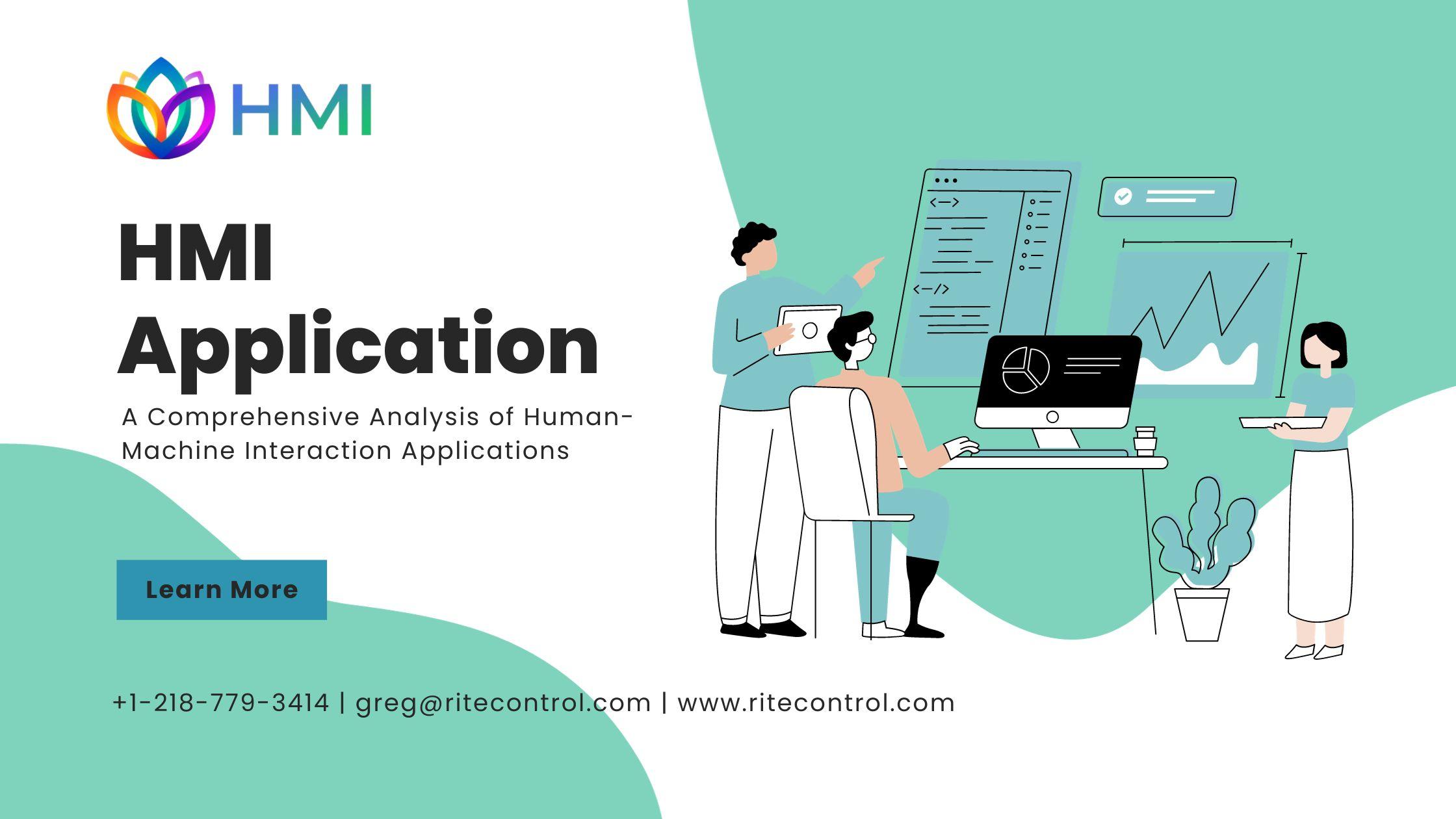Comprehensive Analysis of Human-Machine Interaction Applications
Introduction: A New Era of Human-Machine Collaboration
In the era of digital transformation and Industry 4.0, Human-Machine Interface (HMI) applications have emerged as a pivotal technological enabler, fostering seamless interactions between humans and machines. This comprehensive guide provides:
- An in-depth exploration of HMI applications.
- Elucidating their evolution, significance, and functionalities.
- Transformative impact across various industries and sectors.
Defining HMI: A Multifaceted Exploration
What Constitutes HMI?
Human-Machine Interface, commonly known as HMI, serves as the conduit for facilitating interactions between users and machines. HMI encompasses a diverse array of technologies, methodologies, and principles, including touchscreens, graphical user interfaces (GUIs), voice recognition systems, gesture controls, augmented reality (AR), and virtual reality (VR) interfaces. Collectively, these technologies contribute to enhancing user engagement, accessibility, efficiency, and productivity across various applications, platforms, and environments.
Tracing the Evolutionary Trajectory of HMI
The evolution of HMI transcends traditional boundaries, spanning several decades of technological advancements, innovations, and transformations. From rudimentary control panels and manual interfaces to sophisticated systems powered by artificial intelligence (AI), machine learning (ML), Internet of Things (IoT), and sensor integration, HMI has undergone a paradigm shift, embracing innovations, enhancements, and adaptations tailored to diverse industry requirements, challenges, and opportunities.
Core Components and Technological Advancements Driving HMI Innovations
Touchscreen Technology:
The proliferation of touchscreen devices, interfaces, and platforms underscores the pivotal role of tactile feedback, responsiveness, and user-centric design principles in modern HMI applications. Touchscreen technologies facilitate intuitive interactions, enabling users to navigate, control, manipulate, and optimize systems, processes, and applications with ease, precision, and efficiency.
Gesture Recognition:
Gesture recognition technologies leverage advanced sensors, cameras, infrared technologies, and machine vision algorithms to interpret and translate user movements, gestures, and actions into actionable commands, prompts, and interactions. This enables intuitive, hands-free interactions, fostering enhanced accessibility, responsiveness, and user experience across diverse HMI applications, platforms, and environments.
Voice and Speech Recognition:
Voice and speech recognition systems enable users to interact with machines, devices, and systems through natural language commands, prompts, and queries. Leveraging natural language processing (NLP) algorithms, machine learning models, and advanced speech recognition technologies, these systems facilitate personalized, conversational interactions, fostering enhanced user engagement, accessibility, and satisfaction across various applications and environments.
Augmented Reality (AR) and Virtual Reality (VR):
The integration of AR and VR technologies with HMI applications facilitates immersive, interactive, and engaging user experiences. By overlaying digital information, graphics, and content onto physical environments, AR and VR interfaces enable users to visualize, manipulate, and interact with complex data, simulations, and scenarios with unparalleled precision, immersion, and realism.
HMI Applications: Catalyzing Innovation and Driving Transformation Across Industries
Industrial Automation:
HMI applications play a pivotal role in industrial automation, enabling operators, technicians, and engineers to monitor, control, optimize, and manage manufacturing processes, equipment performance, and operational efficiencies. Through intuitive interfaces, real-time data visualization, predictive analytics, and machine learning algorithms, HMI systems enhance productivity, reliability, safety, and sustainability across diverse industrial sectors, applications, and domains.
Healthcare and Medical Technology:
In the healthcare sector, HMI applications facilitate seamless access to patient records, medical imaging systems, diagnostic tools, telemedicine platforms, and clinical workflows. By integrating interactive interfaces, voice recognition systems, augmented reality technologies, and machine learning algorithms, HMI applications enhance patient care, clinical outcomes, healthcare accessibility, and operational efficiency across hospitals, clinics, research institutions, and medical facilities.
Transportation and Automotive Industry:
HMI applications have revolutionized the transportation and automotive industry, enhancing driver safety, navigation, infotainment systems, and vehicle performance. By integrating touchscreen displays, voice recognition technologies, gesture controls, augmented reality interfaces, and artificial intelligence algorithms, HMI systems foster immersive, intuitive, personalized, and connected driving experiences, optimizing vehicle performance, user satisfaction, and road safety across diverse automotive applications, platforms, and ecosystems.
Emerging Trends, Innovations, and Future Outlook: Navigating the HMI Landscape
Artificial Intelligence and Machine Learning:
The integration of AI and ML technologies with HMI applications enables intelligent, adaptive, and autonomous systems capable of learning, adapting, and evolving in real time. By leveraging advanced algorithms, data analytics tools, predictive models, and machine learning frameworks, HMI systems facilitate personalized user experiences, predictive analytics, adaptive interfaces, and autonomous interactions across diverse industries, applications, and environments.
Edge Computing and IoT Integration:
The proliferation of edge computing technologies, IoT ecosystems, and cloud-based platforms fosters seamless integration, real-time data processing, enhanced connectivity, and scalability across HMI applications. By leveraging edge computing resources, IoT devices, cloud-based platforms, and distributed computing architectures, HMI systems optimize performance, reliability, responsiveness, and scalability, enabling efficient, resilient, and adaptive solutions tailored to diverse industry requirements, challenges, and opportunities.
Blockchain Technology and Cybersecurity:
The adoption of blockchain technology, cryptographic protocols, and cybersecurity measures within HMI applications ensures data integrity, privacy, security, compliance, and trustworthiness. By implementing robust encryption algorithms, authentication mechanisms, access controls, and cybersecurity protocols, HMI systems mitigate risks, vulnerabilities, threats, and attacks associated with unauthorized access, data breaches, and malicious activities.
Conclusion: Shaping the Future with Rite Control LLC
In conclusion, HMI applications continue to redefine human-machine interactions, driving innovation, efficiency, and transformation across diverse industries, sectors, and domains. As industries embrace automation, digitization, and intelligent systems, leveraging HMI applications becomes paramount to fostering innovation, enhancing user experiences, and optimizing operational efficiencies.
At Rite Control LLC, we remain committed to advancing HMI technologies, fostering collaboration, and empowering industries with cutting-edge solutions tailored to diverse requirements, challenges, and opportunities. By embracing innovation, collaboration, and excellence, we strive to shape the future of HMI applications, driving sustainable growth and fostering a smarter, more connected, and resilient world.



